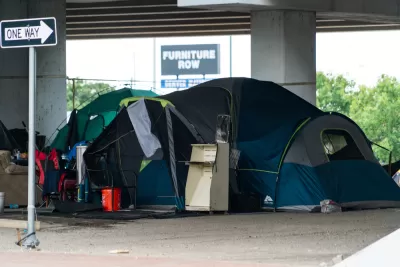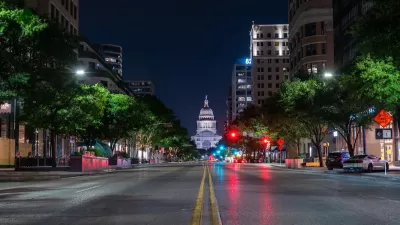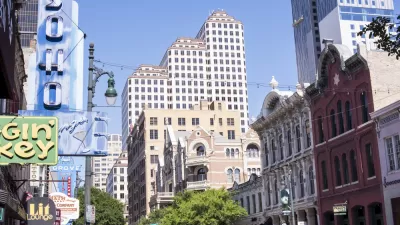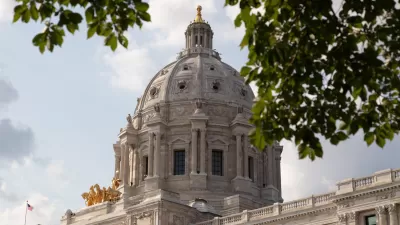The city plans to install temporary housing and facilities as part of its efforts to reduce homelessness and help people move into permanent housing.

The city of Austin has chosen two potential sites for temporary encampments as "part of implementing the mandates of a May City Council resolution that specifies steps and deadlines for its Housing-Focused Homeless Encampment Assistance Link initiative," such as calling for the City Manager to "identify publicly-owned land or land within the city limits owned by other intergovernmental entities or willing community partners that could accommodate tiny home structures to serve as temporary housing" and present a budget for implementation.
As Cindy Widner writes, "the sites would need to be rezoned prior to the installation of temporary, prefab microshelters, which—along with fencing and round-the-clock security—the city apparently plans to provide." The city-owned locations were chosen based on their proximity to Capital Metro routes, the availability of utilities, and other factors. "According to a memo from Dianna Grey, the city's homeless strategy officer, and Parks and Recreation Department Director Kimberly McNeeley, 'Both properties are owned by the City of Austin, are being held for future creation of affordable housing, and could be used temporarily until that development takes place.'"
FULL STORY: City considers two sites for sanctioned encampments

Study: Maui’s Plan to Convert Vacation Rentals to Long-Term Housing Could Cause Nearly $1 Billion Economic Loss
The plan would reduce visitor accommodation by 25,% resulting in 1,900 jobs lost.

North Texas Transit Leaders Tout Benefits of TOD for Growing Region
At a summit focused on transit-oriented development, policymakers discussed how North Texas’ expanded light rail system can serve as a tool for economic growth.

Why Should We Subsidize Public Transportation?
Many public transit agencies face financial stress due to rising costs, declining fare revenue, and declining subsidies. Transit advocates must provide a strong business case for increasing public transit funding.

How to Make US Trains Faster
Changes to boarding platforms and a switch to electric trains could improve U.S. passenger rail service without the added cost of high-speed rail.

Columbia’s Revitalized ‘Loop’ Is a Hub for Local Entrepreneurs
A focus on small businesses is helping a commercial corridor in Columbia, Missouri thrive.

Invasive Insect Threatens Minnesota’s Ash Forests
The Emerald Ash Borer is a rapidly spreading invasive pest threatening Minnesota’s ash trees, and homeowners are encouraged to plant diverse replacement species, avoid moving ash firewood, and monitor for signs of infestation.
Urban Design for Planners 1: Software Tools
This six-course series explores essential urban design concepts using open source software and equips planners with the tools they need to participate fully in the urban design process.
Planning for Universal Design
Learn the tools for implementing Universal Design in planning regulations.
City of Santa Clarita
Ascent Environmental
Institute for Housing and Urban Development Studies (IHS)
City of Grandview
Harvard GSD Executive Education
Toledo-Lucas County Plan Commissions
Salt Lake City
NYU Wagner Graduate School of Public Service





























